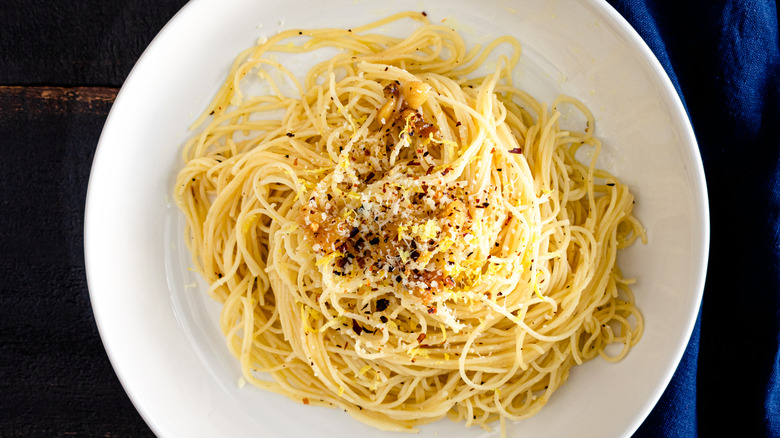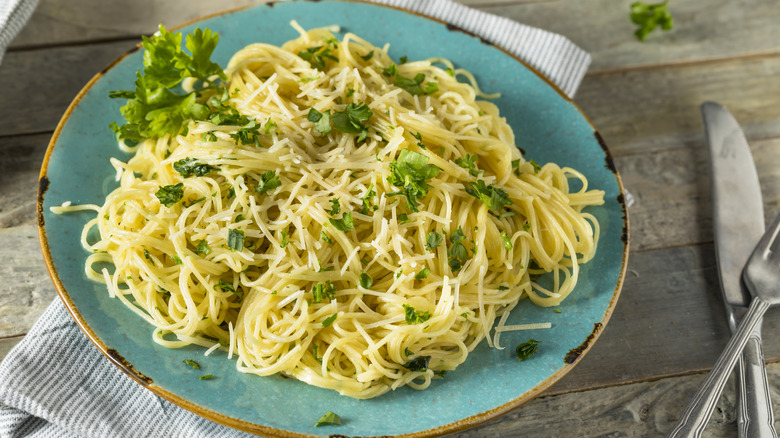You May Want To Avoid Ordering Angel Hair Pasta At Restaurants
Angel hair pasta is frequently confused for its cousin, capellini. But, boasting a width of less than 0.88 millimeters, angel hair is thinner than capellini — in fact, it's thinner than any other kind of Italian pasta. While such dainty strands can make for a unique, tasty bite, this slenderness can sometimes lead to difficulties in the kitchen. These difficulties can be so prevalent, in fact, that the next time you go to an Italian restaurant, you might want to think twice about ordering angel hair, opting instead for a different pasta option.
Capelli d'angelo, as the Italians call it, is notorious for becoming mushy after being cooked. Ideally, angel hair (and every other type of pasta) should be served al dente, which means it still has some firmness rather than being completely soft. Because angel hair is so fine, it's easy for inexperienced chefs to miss the mark of al dente, serving up something far less ideal.
Angel hair pasta can easily turn mushy
Along with quickly turning stracotto or "overcooked," angel hair pasta has additional pitfalls that can make it very hit-or-miss when ordered at a restaurant. The pasta's fragile structure means it doesn't go well with heavier sauces, like bolognese, since there's so little surface area for the sauce to embrace. Angel hair also tends to stick together, which only compounds the issue of mushiness.
To avoid the pitfalls of angel hair, some might find it preferable to order an alternative like vermicelli, linguine, or perhaps spaghetti. These types of pasta are still quite thin, but have more heft and are more difficult to overcook. If you simply can't give up the delicate benefits of angel hair pasta, one way to better your chances of a well-crafted dish is to order your noodles with a lighter sauce. Sauces like plain marinara, cacio e pepe, or pesto are great choices for angel hair since they are also thin and likely won't overpower the pasta.
When cooked correctly, angel hair pasta can pair perfectly with vegetables and seafood, offering a light, tantalizing texture. But since the risk of such texture being ruined at restaurants is so high, if you're accomplished enough, it might be best to make this pasta at home. Then, you'll be in full control of the final product — and if it does end up overcooked, you'll only have yourself to blame.

